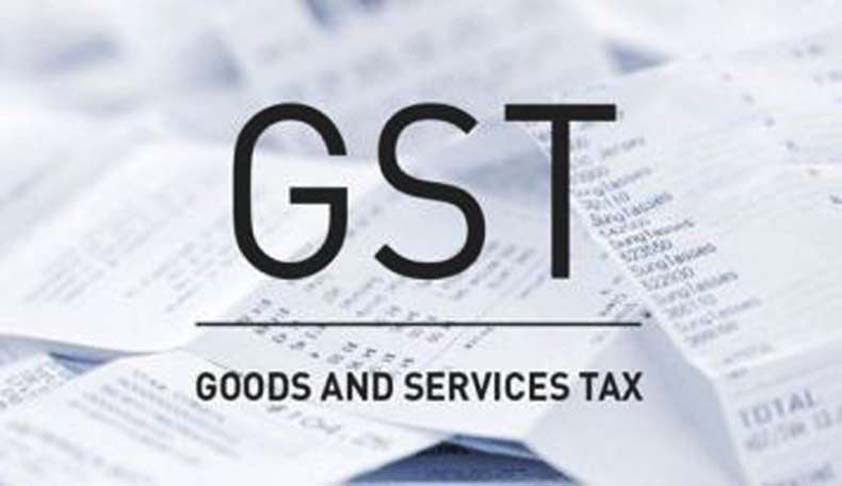- Home
- /
- Top Stories
- /
- Goods and Service Tax (GST)...
Goods and Service Tax (GST) Formally Launched
Apoorva Mandhani
1 July 2017 8:11 AM GMT
The Goods and Service Tax (GST), India’s most ambitious tax reform since independence, was launched at the Central Hall of Parliament at midnight on June 30.Interestingly, this is only the fourth time in the history of independent India that a function has been organized at midnight at the Parliament. The previous three were the moment of Independence on the night of August 14-15, 1947,...
The Goods and Service Tax (GST), India’s most ambitious tax reform since independence, was launched at the Central Hall of Parliament at midnight on June 30.
Interestingly, this is only the fourth time in the history of independent India that a function has been organized at midnight at the Parliament. The previous three were the moment of Independence on the night of August 14-15, 1947, its silver jubilee celebration in 1972 and the third the golden jubilee celebration of Independence in 1997.
Delivering his speech at the occasion, PM Modi expanded the GST to “good and simple tax”, and said that the fruition of GST was not one government or one party’s doing but has been a collective effort.
“GST marks the economic integration of India… There are 500 taxes and we are getting rid of it. From Ganganagar to Itanagar and Leh to Lakshadweep, it is one nation, one tax,” he said.
The PM also went on to acknowledge that the transition to GST might suffer from initial hiccups and teething troubles, and said, “Those who fear, I say please do not do it please. You are your old doctor, you keep your eyes constantly checked by him. That's how you get your number every time, you can make your glasses fixed, you make your numbers there, and even when the new number of specs comes, then you have to adjust the eye up and down for two or two days; This is just that. And so we will try a little bit. With this arrangement we will be easily connected. And so if we try a little bit then we will be easily connected to this arrangement. I urge you to close the market of rumors and now, when the country is running, how to be successful, how to work for the good of the poor and the poor, we will take it and then go less.”
Speaking at the occasion, President Pranab Mukherjee called it a “momentous event for the nation”, and said, “The new era in taxation, which we are about to initiate in a few minutes, is the result of a broad consensus arrived at between the Centre and States. This consensus took not only time but also effort to build. The effort came from persons across the political spectrum who set aside narrow partisan considerations and put the nation’s interests first. It is a tribute to the maturity and wisdom of India’s democracy.”
He said that this was also a moment of some satisfaction for him because, as the Finance Minister, he had introduced the Constitution Amendment Bill on 22nd March 2011. He went on to elaborate on the administration of GST through modern world-class information technology, and called the scope of the change “truly breath-taking”. This was Mr. Mukherjee’s last address in the Central Hall before he completes his term on 25 July.
Finance Minister Arun Jaitley laid out the salient points of the tax reform and said, “We wanted to ensure that the common man and the poor man is not affected. We have ensured revenue neutrality and no unnecessary burden on the weaker sections Tax avoidance will now be difficult, rates will come down, and GDP (gross domestic production) will grow.”
The ceremony, however, did not see former Prime Minister Manmohan Singh in attendance, as the Congress boycotted the function.
GST is a single tax on the supply of goods and services, right from the manufacturer to the consumer. Credits of input taxes paid at each stage will be available in the subsequent stage of value addition, which makes GST essentially a tax only on value addition at each stage. The final consumer will thus bear only the GST charged by the last dealer in the supply chain, with set-off benefits at all the previous stages.
The GST Bill was signed by President Pranab Mukherjee on September 8, 2016 paving way for it to become a law. The 122nd Constitutional Amendment (GST) Bill was passed by the Lok Sabha and the Rajya Sabha in August last year. The Bill then received the President’s assent pursuant to its ratification by 16 of the country’s 29 States.
You may also read: Frequently Asked Questions (FAQs) on Goods and Services Tax (GST)


